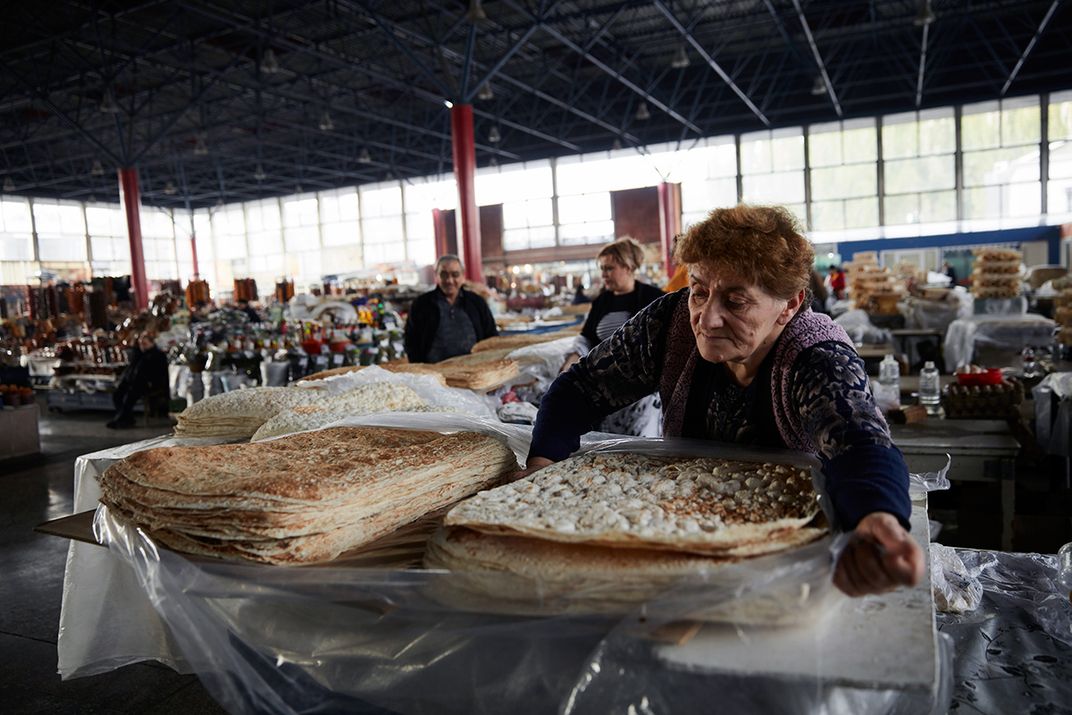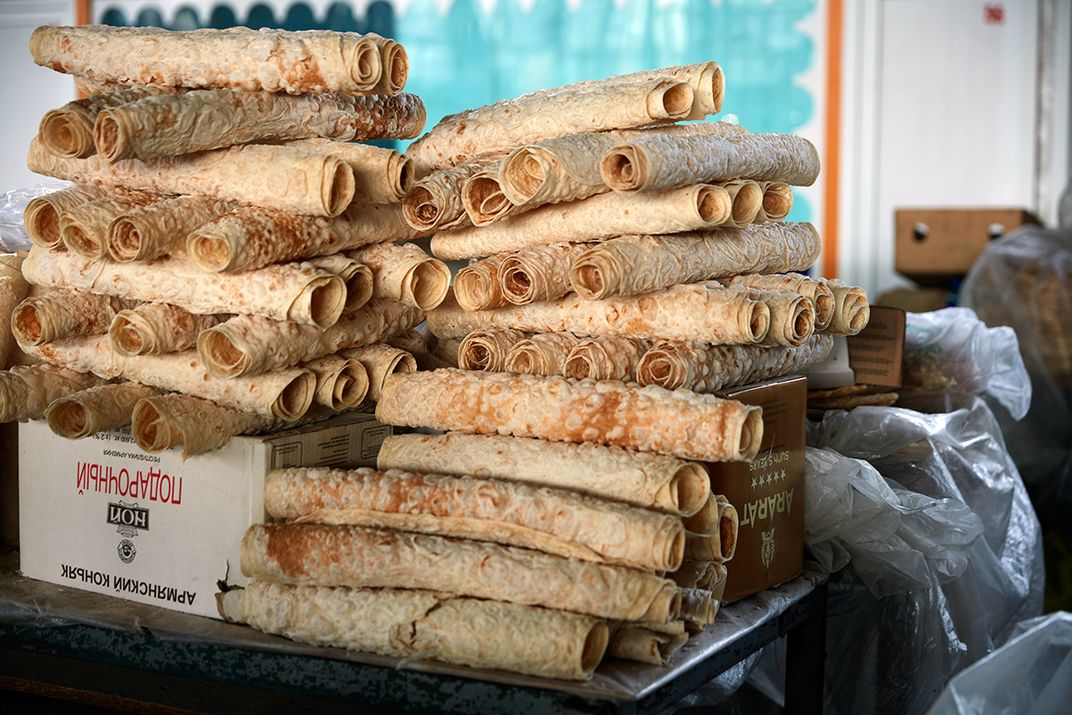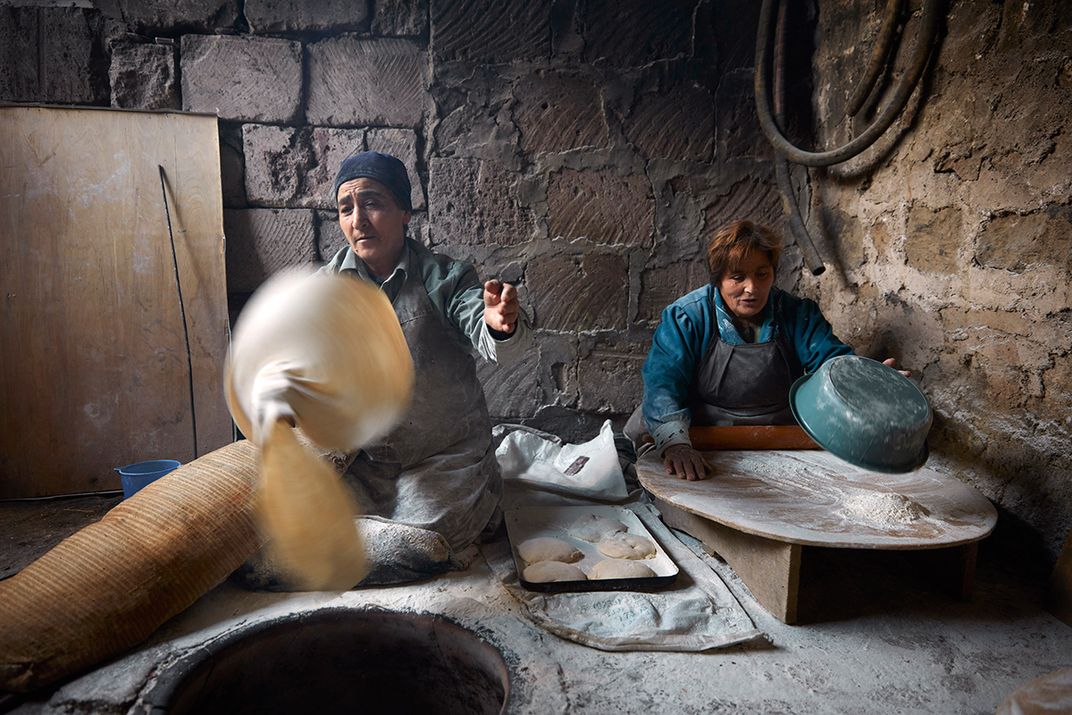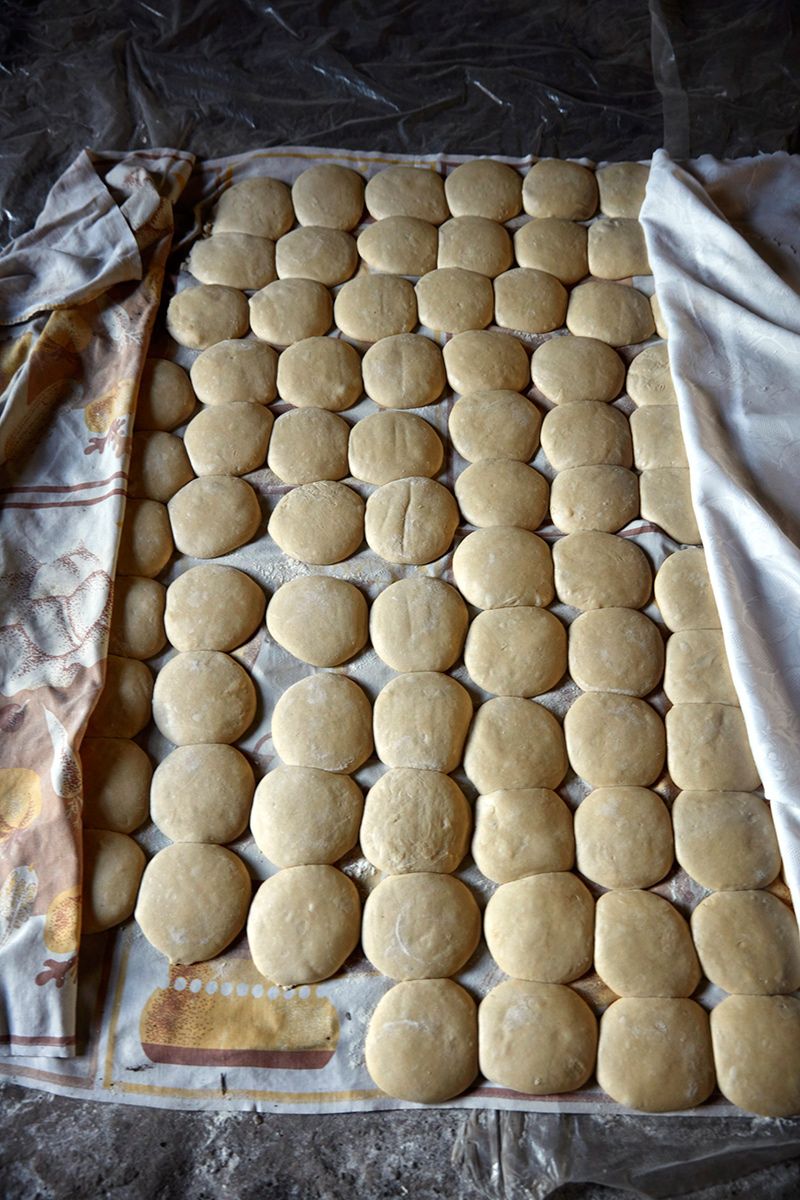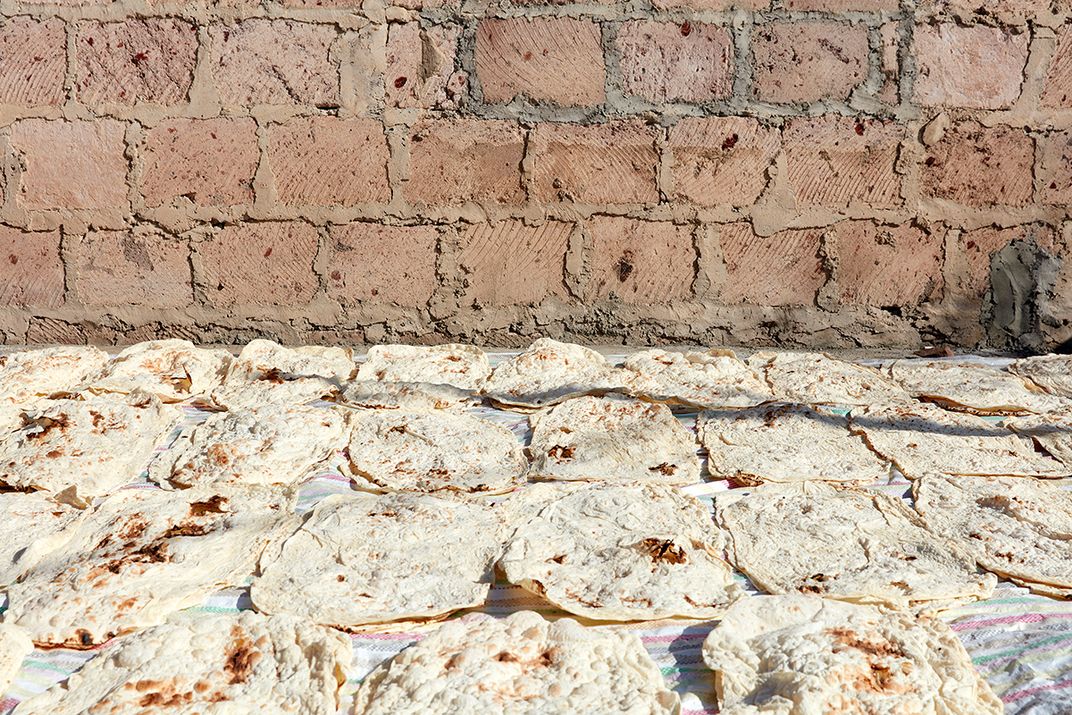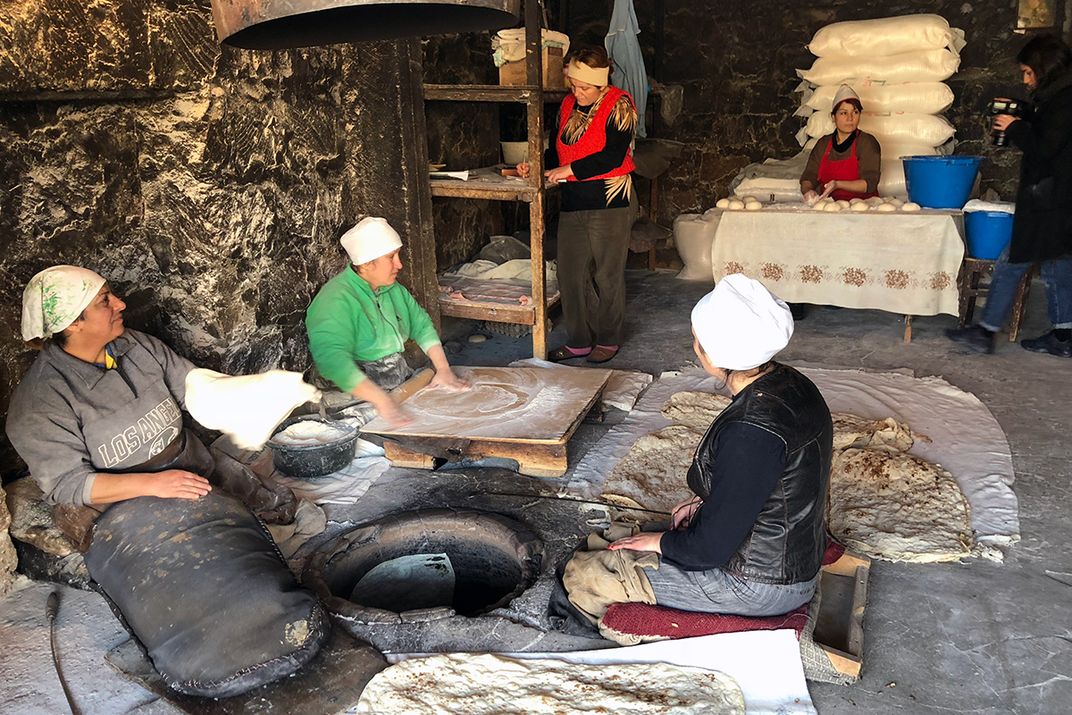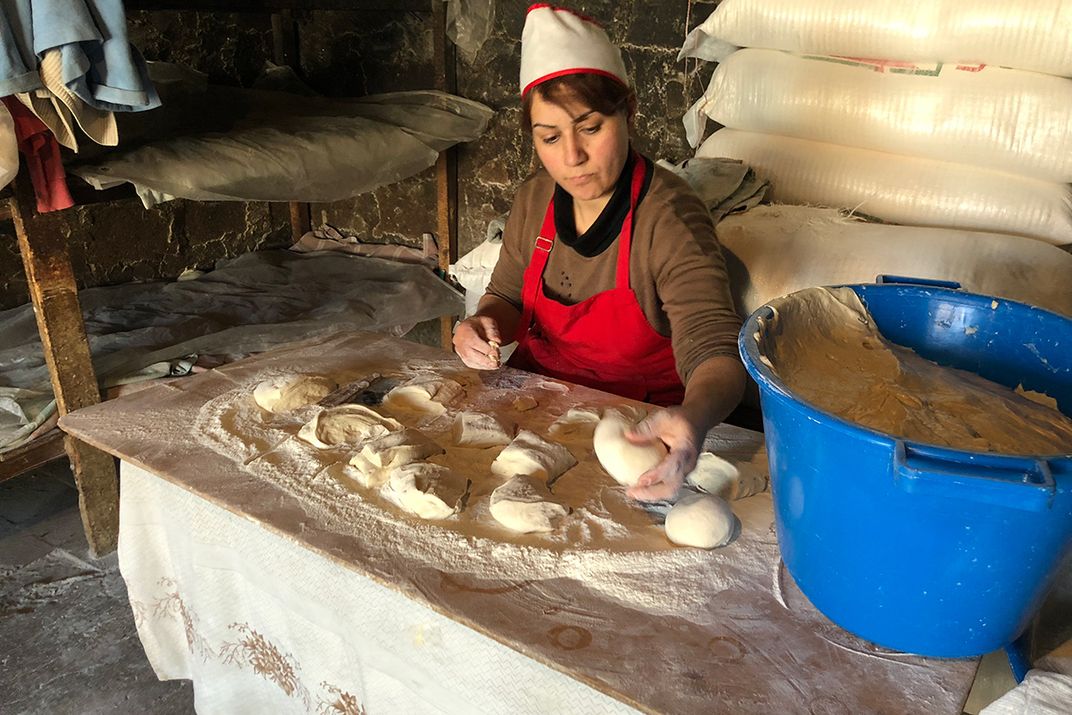On the Lavash Trail in Armenia
/https://tf-cmsv2-smithsonianmag-media.s3.amazonaws.com/filer/19/1d/191dbbe8-0de8-4ac5-be7f-0047c1ae9155/cheese-herbs-lavash.jpg)
The first lavash we ate after arriving in Yerevan came from the corner store near our rental apartment. It was pale and paper-thin, but durable enough to wrap around scrambled eggs and cheese. This lavash wouldn’t be the lavash that changed our lives, but it served an important purpose: refueling our brains after two days of airports, layovers and plane seats.
The “we” in this story comprises chef Ara Zada, photographer John Lee, and me, a food writer. Our admiration and interest in Armenian food is what brought us together to form the team behind the upcoming cookbook Lavash. Ara grew up going to an Armenian school in Southern California, and he wanted to dig deeper into his heritage. John got to know Armenian food while teaching a food photography workshop at TUMO, an after-school digital media and cultural learning center for youth in Armenia. And I got hooked in college while writing my thesis on food and Armenian cultural identity.
Why is lavash at the heart of our story? It’s the most culturally important bread in Armenia, added to UNESCO’s intangible cultural heritage list in 2014. The act of baking lavash has also been documented in countless paintings. In the 1970s, President Gerald Ford even selected a print of Armenian Ladies Baking Lavash by Armenian American artist Manuel Tolegian for the White House Bicentennial Collection.
Yet lavash is also painfully misunderstood outside of the Caucasus. (One English-language cookbook suggests that tortillas make a good substitute. They don’t.) In Armenia, even the factory-made lavash we ate for breakfast, which came in a plastic bag, was miles ahead of the impostors we had sampled back home. But it wouldn’t be the last lavash we ate, either. If we wanted to learn how to make the real thing, we were going to need to venture much farther than the corner store.
The first stop: GUM Market, a large covered market near downtown Yerevan. In addition to the bright rows of dried fruit and nuts were tables stacked with large sheets of lavash. Some were thicker and more blistered while others were light and tissue-thin. Periodically, the women vendors sprinkled water over the stacks of bread using a water bottle with holes punched in the lid. This helps refresh the bread, keeping each sheet pliable. That’s one of the great things about lavash: all it needs to come back to life is a splash of water.
“Why does this bread have so many blisters?” we asked.
It’s baked in a tonir, they answered, a subterranean clay oven heated with a wood fire at the base. Like naan in a tandoor, bakers stick lavash to the sides of the oven to bake it, which gives it irregular blisters. In comparison, factory-made lavash is much more uniform in color.
“Does the bread have yeast?”
“Yes, drozhzhi,” they said, the Russian word for yeast.
Was it commercial yeast or something more like a sourdough starter? That they couldn’t tell us.
If the women selling lavash at GUM could share part of the story, the rest could be gathered at a tonir village, a place known for the goods it makes from a tonir. But when we arrived in Argel, a village about twenty minutes outside of Yerevan, the women were taking the day off from baking. Instead, they were busy hanging strands of arishta, pasta made from a salty flour-based dough, out to dry on clotheslines.
We drove instead to nearby Yeghvard, where a friend said her neighbors were baking lavash to prepare for winter.
The large home had two greenhouses in the back. The entryway floor and the roof were covered in bedsheets, lined with rows of just-baked lavash, drying in the open air. Between the house and the greenhouses, a tonir smoldered away, surrounded by four women, each with a different job: shaping, rolling, stretching and baking the bread. To remove the bread from the wall of the tonir, one of the women used a hook to fish it out, letting it cool for a few seconds before stacking it on top of a pile of baked lavash.
They handed us strips of warm lavash and pulled out a plate of salty cheese, cilantro sprigs and skinny green onions to eat with it. Slightly charred and warm, this lavash was in a different league from the store-bough lavash from our first morning—chewier, less fragile and deeper in flavor.
The women explained that they’re neighborhood friends and always get together to make lavash in the fall, but only for themselves—not to sell. Once it’s dry, they stack it and store it in a spare bedroom. We took a look. There was enough lavash in the house to stock all of GUM Market.
“Do you add yeast?” we asked.
Yes, yes, they said, and then dictated their recipe.
We ate a few more lavash wraps before thanking them and heading back to Yerevan.
A few days later, we returned to Argel on baking day so we could see the village in action. The women had similar roles as those in Yeghvard, with an addition: one ran the shop, counting out change with an abacus as men rolled up in vans to purchase bulk lavash to resell elsewhere. It was a cold morning, so the bakers invited us to sit with our legs dangling in the hole next to the tonir to warm our feet while they got ready to start baking.
“Do you add yeast?” we asked the woman mixing dough in a large, old mixer fitted with a dough hook.
Yes, she said, but she also saves dough from the day before and mixes it into a new batch.
Why? We asked.
For flavor and texture, she explained. She then covered the dough with a jacket to keep it warm while it rested between mixes.
We then stayed quiet, not wanting to interrupt while the women cranked up the fire and settled into a fast-paced rhythm of rolling, stretching and baking.
When it was time for a break, one of the bakers walked to the back of the shop and pulled out a pot of hot, boiled potatoes and some pickled beets and peppers. We wrapped the lavash around the potatoes. Without expecting much, we took a bite.
Maybe it was the smell of the wood-fired tonir, maybe it was the superiority of the potato, or maybe it was the feeling of getting this close to the source. Whatever the reason, it remains one of the most unforgettable things we ate in Armenia.
On our trip back to California, we packed lavash so we could keep enjoying it while we worked out the recipe. Like the lavash at GUM Market, it rehydrated easily with a mist of water. That precious supply, however, is gone. And now the real work begins: recreating that same lavash satisfaction, but this time in America.
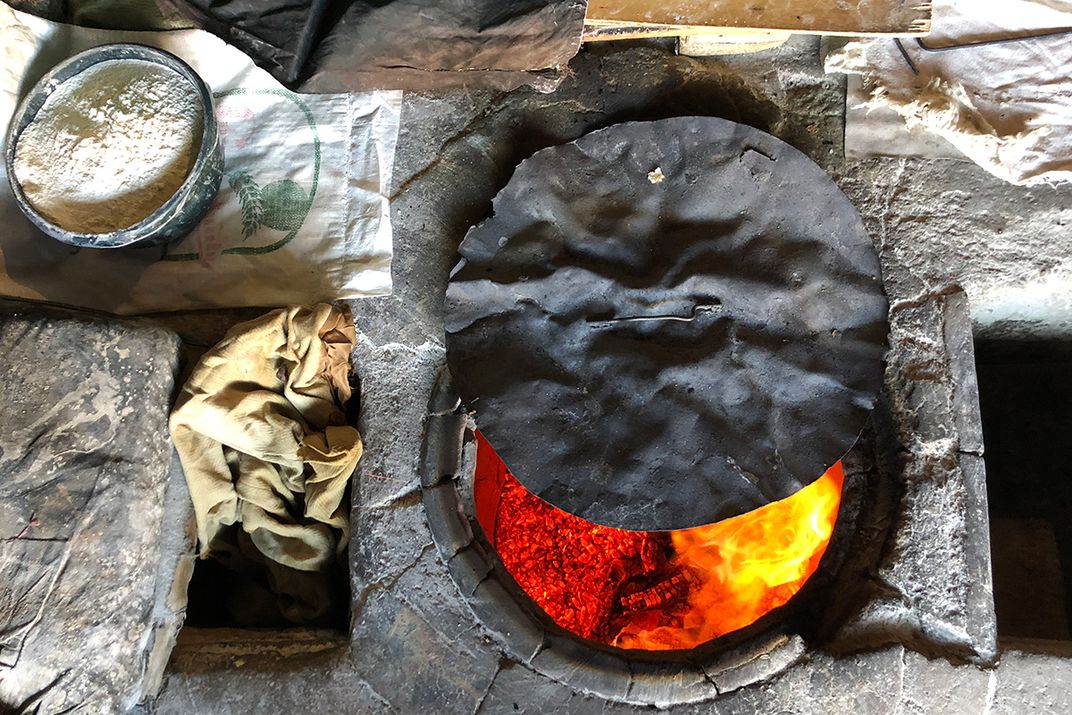
***
Try lavash and learn more about Armenian foodways at the 2018 Smithsonian Folklife Festival, June 27 to July 1 and July 4 to 8 in Washington, D.C.
Kate Leahy is a freelance journalist, cookbook author, and recipe developer. Her next book, Lavash, created with fellow Armenian food enthusiasts John Lee and Ara Zada, will be released by Chronicle Books in fall 2019.
Planning Your Next Trip?
Explore great travel deals
Smithsonian magazine participates in affiliate link advertising programs. If you purchase an item through these links, we receive a commission.
